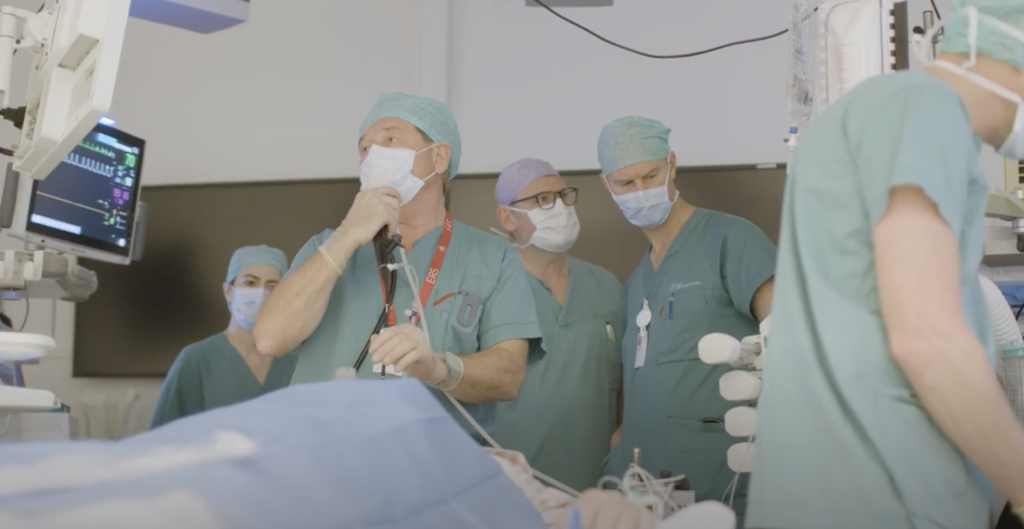What image-guided surgery is and how it works.
Technology has revolutionized the world in many ways. For example, in the medical field, image-guided surgery (IGS), also known as surgical navigation, uses technology to allow surgeons to perform more accurate and less invasive procedures on patients (2). The technological tool works similarly to a global positioning system (GPS) in a car or phone. A GPS allows people to know their relative position on a map just like how surgeons can know their tool’s relative position on an image with IGS. Surgeons take preoperative images of patients to serve as a “map” during operations, and utilize the intraoperative IGS system, as GPS uses satellites, to show where the surgeon is operating (2). Surgeries using IGS systems often take place in a hybrid surgical room, a surgical theatre with advanced medical imaging devices (1).

Furthermore, IGS uses cameras and electromagnetic fields to capture and pass information from tracked surgical instruments to computers for surgeons to view while operating (1). Surgeons can get real-time feedback, helping them to identify and account for changes during the procedure (1). They can also view the inside of the patient in high three-dimensional detail and have pinpoint accuracy and control when working inside the patient (1). The IGS system has a mini-optical navigational system that guides surgeons by making real-time measurements of size, location, and position of specified structures in relation to others (1).
IGS is highly versatile, as it allows for the exploration of almost any part of the body (3). The surgical system was originally developed for the treatment of brain tumors but has since been used for many other procedures (1). IGS can be applied to the brain, spine, pelvis, hip, knee, lung, breast, liver, and prostate, as well as other parts of the body (3). These technological advances in medicine only improve patients’ futures because patients can receive treatment on anatomical structures, like brain tumors, on which it was once considered impossible to operate due to their size or location (1).
Importantly, patients can have reduced tissue trauma and less disruption from surgeons finding the anatomical structure because of higher precision using IGS (1). Furthermore, since surgeons have preoperative high-quality images and control, they can plan out their operation before beginning; this allows them to find the best paths and avoid specific anatomical structures. For example, during nerve-sparing procedures, surgeons can use IGS to avoid specific anatomical landmarks between prostate and neurovascular bundles, reducing the negative effects of sexual dysfunction and urinary incontinence (3). With smaller incisions, less invasive and faster procedures are possible, meaning that patients can have an optimal fast recovery after their medical operations.
Overall, image-guided surgery has revolutionized standard surgical techniques. It allows surgeons to reduce potential complications and improve overall outcomes. At the same time, surgeons are also given more control and accuracy during patient operations.
– Allison Wu
References
- Brainlab. (n.d). What is Image Guided Surgery? Retrieved from https://www.brainlab.org/get-educated/brain-tumors/understand-image-guided-surgery-for-brain-tumors/what-is-image-guided-surgery/.
- Cleveland Clinic. (n.d). Image-Guided Surgery. Retrieved from https://my.clevelandclinic.org/health/treatments/17120-image-guided-surgery.
- Henpicked. (n.d). The amazing technology behind image-guided surgery systems. Retrieved from https://henpicked.net/the-amazing-technology-behind-image-guided-surgery-systems/
- Siemens Healthineers. (March 19, 2019). Image-guided surgery in hybrid operating theatre – Oslo University Hospital [Video]. Youtube. Retrieved from https://www.youtube.com/watch?v=ZAI-GuxWFS0.
Images
- https://www.youtube.com/watch?v=ZAI-GuxWFS0 – Screenshot around 1:19)

